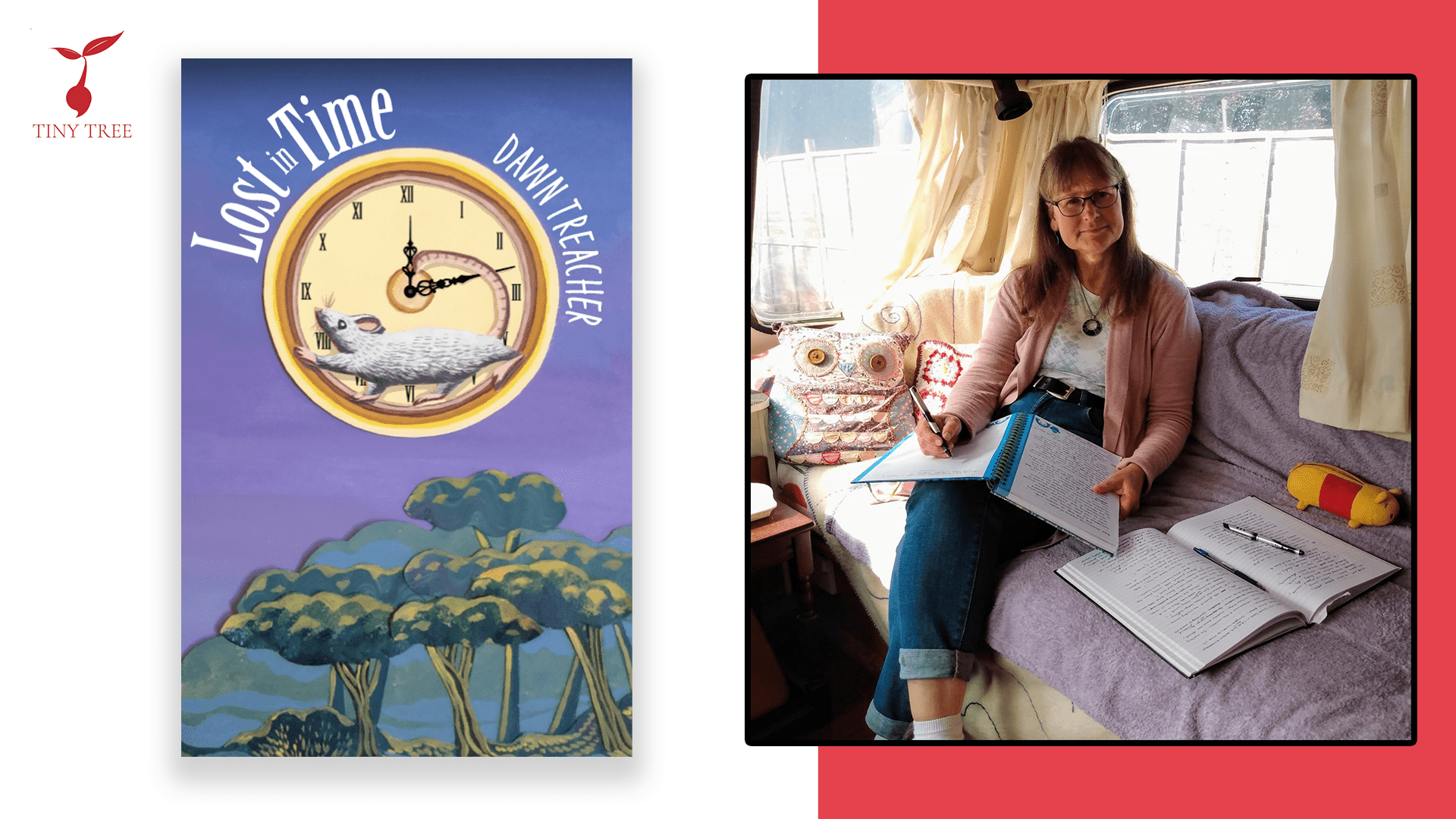
“…how better to explore these things in the safety of a story.”
‘Lost in Time’ is a middle-grade novel by author and illustrator Dawn Treacher. When an infestation of white mice makes time itself begin to disappear. Connie fears it may slip away completely but, alongside her friends, she’s off on an adventure in search of the answers.
We chatted to Dawn about how her latest book combines elements of classic adventures and fantasy, blending it uniquely with a gentle introduction to the subject of dementia.
Hi Dawn! Before you tell us about ‘Lost in Time’ can you tell us how you got started writing for children?
10 years ago now, I was studying for a diploma in picture book illustration with the London Art College and my final project was to write and illustrate a picture book. Well, as I’d never written anything before I enrolled on a 20-week course in my local town on writing for children. I’ve never looked back and have written a novel every year since. The picture book I wrote for that course was published by Stairwell Books in 2017.
As an author and an illustrator, what does your creative process look like and how do you work to ensure the writing and the art complement each other?
I’ve always drawn and painted, ever since I was a small child. I graduated from Bournemouth College of Art and Design in 1996, so painting has always been my hobby, passion and life. When I started writing it remained a passion though, for many years they were separate hobbies. That changed in 2021 when I was asked to illustrate a middle-grade novel and produce the cover art. Since then I have illustrated books for myself, for others and, of course, Lost in Time. Now I pretty much paint and write most days. Both are hugely beneficial for my wellbeing and, as a carer based at home, they complement my life giving me an outlet to express myself.
The story of ‘Lost in Time’ is so unique, with an infestation of white mice playing an important role in the plot. Was there something specific that sparked this idea?
Oh yes. Nearly all of my novels are sparked by one image. For ‘Lost In Time’, that was the nursery rhyme, ‘Hickory Dickory Dock’, with the mouse climbing up the clock. I asked myself, what if that mouse stole the time? The rest pretty much flowed from there.
Connie is the hero of ‘Lost in Time’. What makes her a great character for young readers?
Connie is very curious and isn’t afraid to question or challenge things. She is resourceful, brave and courageous. I hope she can be a great role model for children.
In the book, time disappears in front of Connie’s eyes. However, time has even more significance within the plot as well. Can you tell us a little about that?
Although ‘Lost In Time’ begins for Connie with time disappearing, the book explores the whole concept of time. On the face of it, time seems quite an artificial concept that humans have kept track of. Life revolves around it, depends on it, and it influences what we do and when we do it. I began wondering how important a part it plays in our lives. Naturally, this led to more complex questions: Can time run out? Is it infinite? If it’s not infinite, what happens if it does run out? Should we let time control our lives? What if we abandoned measuring time altogether, how would our lives be different?
I also looked at dementia, because for many who suffer from it, it’s as if they are losing time and sometimes getting lost in time. I have never shied away from complex issues in my children’s books because children are fascinated in things and always have questions, so how better to explore these things in the safety of a story.
Can you tell us about Connie’s Gran? Gran is battling dementia and that in itself is a unique extra detail. What drew you to writing about a character with dementia?
Dementia is an issue close to my heart. My beloved mother-in-law has suffered from dementia for 12 years and is now in the latter stages. Throughout those years she has been losing time, all the memories, piece by piece. During the middle period of her illness, she was almost stuck in time. She had no memories to draw on after her childhood so all she could talk about were those years as if all the time beyond it had disappeared, stolen by the disease. When I started thinking about this book and the concept of time, I saw Connie’s gran as having dementia and for her, she was losing time. She lives in the past, when she was still waiting for her daughter to return and so when Connie heads off in search of answers, she has the worry of her Gran too.
Friendship and family are central themes in ‘Lost in Time’. Can you tell us more about Connie’s friends and the other characters that play a role in her journey?
All my children’s books are centred on the importance of family and friends because, at this age, these are vitally important to children. Connie’s friend, Nevis, the clockmaker, is very much the father she has never known, a huge support for her. Mia and Fidget her robot, are friends she will meet on her journey and as with all good friends they offer, emotional support, are great company in an adventure and each helps each other.
Tell us more about Fidget, Connie’s robot friend. How did you come up with him and what role does he play in the story?
Fidget is of course a robot, so really helpful to have in tricky situations. Fidget has solutions to many technical difficulties and is hugely resourceful and fun but, he is also a friend and an ally. He is the perfect companion to have in a story based in a technically advanced world.
There are elements of fantasy and adventure with some deeper and more emotional issues. How did you manage to weave all of these together?
On the face of it all my books are action-packed, perilous adventures, allowing children to escape into their imaginations. However, at this age, my readers are exploring the world and the harder issues which affect all children as they grow. I hope ‘Lost in Time’ can introduce some of the bigger questions and challenges that life may bring and allow them to explore them safely within the realms of a story where they can be brave and resourceful and help save the day too.
Do you have a message you hope young readers can take from ‘Lost in Time’?
I hope my readers will see that life is very much what we make it and, although time plays a part in all our lives, if we put our well-being first time can become a useful thing, rather than us becoming slaves to it.
Finally, after reading ‘Lost in Time’, what do you hope children learn about facing challenges and embracing what is important to them?
I hope my readers will realise that though life throws us challenges, we can be brave and courageous, and also that our friends and family offer wonderful sources of support when times are hard and we are blessed to have them in our lives.
‘Lost in Time’ by Dawn Treacher is available to pre-order now. The book will be published by Tiny Tree on June 13th 2024.

